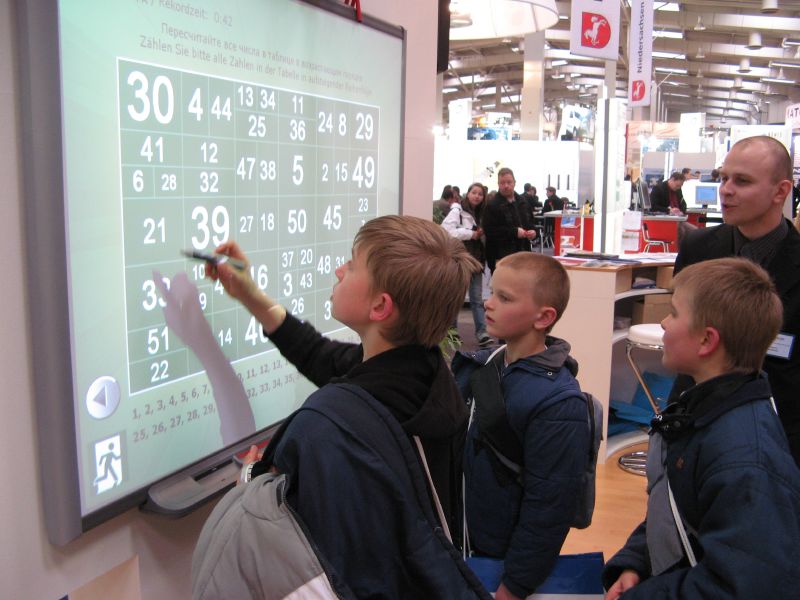- Back to Home »
- Chapter 10 – Promoting Success for All Students through Technology
Posted by : AnnieAKiwi
Thursday, April 3, 2014
Focus question: How
can assistive technologies be incorporated into instruction to support teaching
all learners?
Assistive technology enable students to become more
independent in school and throughout their life. It allows teachers to
“differentiate instruction and pursue universal design” (Maloy, R. W., Verock-O, R. E., Edwards, S. A., & Woolf,
2011). Disabled children use assistive technologies to learn and
function more effectively. Individuals with hearing, sight, mobility, or
cognitive challenges are able to translate text and understand spoken words. AT
can be communication boards, special purpose computers, prosthetics, attachment
devices, positioning devices, screen-readers, communication software,
educational software, specialized learning materials, and curriculum aids.
Teachers need to be actively involved with the child, in addition to using
technology.
A software that displays written text from a person’s spoken
words is speech recognition. Individuals with fine motor disabilities and
dyslexia use this software. Some individuals prefer to speak than write or type
their ideas. Users need to train the system to recognize one or more major
voices by speaking into the microphone for speech recognition programs. The
software learns to recognize the individual’s speech patterns and tonal
nuances. The software provides students a new way to record their thoughts.
Although it transfers spoken words to written text, it still needs to be
revised by teacher and student.
Text reading software are available in many versions, which
enables users to “hear written text aloud by a computer” (Maloy, R. W., Verock-O, R. E., Edwards,
S. A., & Woolf, 2011). When I observed elementary classes, I noticed that
students can listen to stories on the computer. They have the story in front of
them, but they have the option of having the computer read the story to them. It’s
a wonderful tool for students who learn better through a multimodal experience that
supports decoding letters, sounds, and words by listening to text read aloud. Screen
reading software is a type of text-to-speech software. This software is like a
translator for the visual page. It has features that allows the user to know
the whereabouts and actions of the mouse. The screen reading software reads the
text that was scanned on the computer screen. Some examples include JAWS,
VoiceOver from Apple, Google Chrome, and TalkBack.
Tech Tool link: Interactive
Whiteboards
Interactive whiteboards are mounted on a wall or whiteboard.
It’s connected to a computer and a projector, which allows “teachers and
students to access a computer’s desktop directly at the board using a finger,
pen, or other touch device” (Maloy,
R. W., Verock-O, R. E., Edwards, S. A., & Woolf, 2011). Interactive
whiteboards show any material on your computer screen in large size. It creates
instructional opportunities for students as a class, groups, or individual. Teachers
can use it for visual, auditory, and hand-on learning activities.
Summary &
Connection:
This chapter explains about how teachers have opportunities
to meet the learning needs of all students through computer technologies. Diversity
students show more interest in U.S. history when they see that teachers have integrated
stories and histories of multiple peoples. Technologies such as interactive
websites, online videos, and web-based primary source materials bring names of individuals
or groups that are not mentioned in books and lesson plans.
Teachers and students are able to access resources from the
internet to explore multiple languages. These resources provide opportunities
to English speakers and students that are learning English. An example of a
helpful resource is online language translation service. Both students and
teachers can access Google Translate, which is free and available as a website
and app for smartphones and tablets. Teachers are able to translate notes,
assignments, letters to parents, and other materials for students of multiple
languages. “Technology supports diverse students and multicultural education” (Maloy, R. W., Verock-O, R. E., Edwards,
S. A., & Woolf, 2011).
The chapter further discusses about differentiated
instruction (DI) and universal design for learning (UDL). The purpose of DI and UDL is to address
the needs of diverse students with curriculum and instruction. It benefits
students with special educational needs, gifted and talented learners, or ELL
by meeting their needs and differentiating classroom activities. Teachers
create different educational experiences to meet students need called DI. UDL
is “the application of universal design principles to educational settings” (Maloy,
R. W., Verock-O, R. E., Edwards, S. A., & Woolf, 2011). In order to serve
the needs of the widest range of students, teaching and learning situations are
created. Students with disabilities use assistive technology to learn and function
in society.
Resources:
Maloy, R. W.,
Verock-O, R. E., Edwards, S. A., & Woolf, B.P.
(2011). Transforming learning with new
technologies. (2nd ed.). Boston, MA: Pearson Education Inc.

















There is so much value in the UDL principles - CAST is a great resource. The real nugget of differentiation and applicable technology tools is that it is not just for those students who have a special need, but for all students! :) Nice visual enhancement.
ReplyDelete